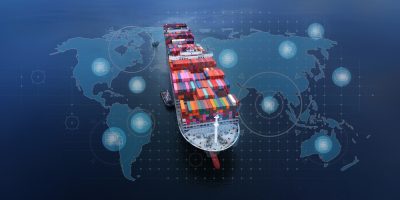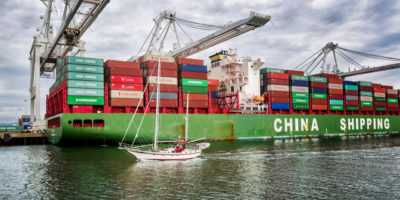-
USA
Dazi US | Gestione del rischio commerciale nei contratti con clienti e fornitori internazionali
14 Aprile 2025
- Distribuzione
- Fisco e tasse
L’errore più pericoloso che si può fare, dopo l’annuncio della sospensione (parziale) dei dazi US per 90 giorni, è sperare che tutto vada per il meglio e si tornerà al mondo pre-2 Aprile.
In primis, perché sono rimasti in vigore dazi molto invasivi: 10% su tutti i paesi che commerciano con gli USA, compresa la UE, 25% sul settore automotive, 25% sull’acciaio e alluminio, 145% sulla Cina.
In secondo luogo, perché è impossibile prevedere le azioni dell’Amministrazione USA nel breve e medio termine: non si può escludere che i dazi restino, aumentino, cambino obiettivi o che intervengano altri fattori a sparigliare le carte sui mercati internazionali, come una escalation della guerra commerciale con la Cina.
I 90 giorni di sospensione sono un’opportunità
La sospensione temporanea dei dazi da parte degli Stati Uniti rappresenta una finestra preziosa, che va utilizzata non solo come una tregua, ma come un prezioso spazio d’azione: 90 giorni per rimettere mano ai contratti, rinegoziare clausole chiave e inserire leve di flessibilità che possano proteggere il business nei vari scenari futuri, verso gli USA e anche verso altri mercati.
Chi esporta oggi non può permettersi di “stare a vedere cosa accadrà”: è il momento di agire, e farlo in modo professionale e strategico. Vediamo una checklist di punti importanti da considerare.
Cosa prevedono i contratti con clienti e fornitori?
Il primo punto è quello di fare una ricognizione degli accordi con la rete commerciale negli USA e in altri paesi che esportano verso gli USA, nonché con i fornitori a monte della supply chain.
Esiste un contratto scritto? Lo scenario peggiore – purtroppo assai frequente – è quello in cui le parti collaborano in modo informale, solo sulla base di ordinativi e conferme d’ordine. Ciò lascia indefinito non solo che accade in caso di imposizione di dazi, ma anche tutta una serie di altri punti – ad esempio la responsabilità per la circolazione dei prodotti, i limiti ai danni che possono essere richiesti in caso di inadempimento, la durata dell’accordo, le regole applicabili e le modalità di risoluzione di eventuali controversie.
Un altro scenario molto problematico è quello in cui i contratti ci sono, ma sono generici e non prevedono i patti necessari per gestire i rischi legati all’operatività in un mercato molto litigioso come gli USA, per di più con costi legali altissimi.
Fatta questa ricognizione, si possono mettere in campo le azioni necessarie, dando una priorità in base all’importanza dei rapporti commerciali e, a seconda dei casi:
- Negoziare e concludere un contratto scritto ex novo
- Sostituire il contratto esistente con un contratto completo e corretto
- Integrare l’accordo esistente con patti per la gestione dei dazi e di altre cause di fluttuazione dei prezzi
Soffermiamoci sull’ultimo scenario, assumendo che esista un contratto completo e corretto, che non regolamenti però la questione della fluttuazione dei prezzi e dei costi, come conseguenza, diretta o indiretta, dell’introduzione dei dazi.
Addendum al contratto
Il modo corretto di intervenire, in questi casi, è quello di sottoscrivere un Addendum al contratto originario, specificando quali patti del contratto vengono derogati e quali patti si aggiungono. È importante che l’Addendum sia negoziato e firmato da persone che hanno il potere di rappresentanza delle parti e che sia redatto con l’ausilio di legali specializzati in questo campo. Oltre ad inserire clausole corrette, infatti, occorre verificare che i patti siano validi secondo le norme di legge applicabili al contratto, che spesso non sono quelle della legge italiana.
Ecco alcune clausole che possono essere oggetto dell’Addendum, da modulare a seconda del caso specifico e dei possibili scenari.
Ripartizione dei dazi (“Tariff Cost Sharing”)
Introducendo questo patto si prevede che nel caso in cui i dazi siano confermati al [x]% o siano ridotti o aumentati entro certe soglie stabilite, le Parti si accolleranno i costi addizionali per giusta metà, o secondo altre percentuali stabilite.
Si può anche prevedere un tetto massimo di tassazione, oltre il quale una parte avrà facoltà di recedere dal contratto o di chiedere la sospensione di certi ordinativi per un determinato periodo di tempo, decorso il quale avrà diritto di recedere.
Revisione del prezzo (“Price Adjustment”)
Con questo patto si concorda, a seconda dei casi, uno sconto o un aumento del prezzo del prodotto, nel caso di dazio superiore al [x]%.
Tra i casi di utilizzo, oltre a quello dell’impresa che esporta negli USA o in altri mercati intermedi, con destinazione finale dei prodotti in USA, c’è quello dell’impresa che acquista un prodotto oggetto di dazio all’importazione e lo rivende, trasformato o assemblato.
Diritto di sospensione o cancellazione degli ordini (“Right to Cancel or Postpone Confirmed Orders”)
Questo patto dà il diritto di revocare o sospendere per un certo periodo ordini già negoziati, come tali vincolanti, nel caso di conferma o introduzione di dazi oltre una certa soglia, ad esempio se per l’import del vino italiano fosse confermata la tassazione al 20%.
La clausola può essere combinata con i patti precedenti, ad esempio stabilendo che sotto la soglia indicata i contratti restino validi e le parti si accollino per giusta metà il dazio, oppure abbiano il diritto di rinegoziare il prezzo.
Revisione del programma di fornitura (“Supply Forecast Adjustment”)
Per modificare programmi di forniture già concordati per una certa durata (es. 24 mesi), con obblighi di vendita e acquisto continuativi, vincolanti o meno, ad un prezzo fisso o indicizzabile solo entro certi limiti. Questo patto consente di concordare i presupposti per rimodulare i programmi di fornitura a breve e medio termine e può essere molto utile per definire le regole che si applicheranno ai rapporti con fornitori o clienti importanti per gli eventuali cambi di volumi, tempi di consegna e prezzi.
Diritto di ricorrere a fornitori alternativi (“Right to Source from Alternative Suppliers”)
Questo patto serve per essere autorizzati – se necessario – al reperimento di fornitori di componenti o materie prime alternativi rispetto a quelli precedentemente autorizzati nel contratto con il cliente finale, ad esempio nel caso in cui l’acquisto da parte degli originari fornitori sia divenuto troppo costoso o difficoltoso per effetto di dazi imposti all’importazione o in precedenti passaggi della catena di fornitura, oppure altri eventi come la fluttuazione valutaria o dei prezzi di certe commodities oltre un certo livello stabilito nell’accordo.
Hardship e Force Majeure
L’imposizione dei dazi non può essere invocata come una causa di Forza Maggiore o di eccessiva onerosità sopravvenuta, rispettivamente per sottrarsi all’adempimento del contratto o per rinegoziare il prezzo, neppure in casi di aumento dei prezzi molto alto (come il dazio del 145% imposto ai prodotti cinesi). Questa conclusione è pressoché uniforme secondo la legge e la giurisprudenza dei principali paesi coinvolti nella guerra delle tariffe: USA, Cina, Canada, Messico, Francia e Italia: rimando a questa guida pratica un esame puntuale di cosa prevedono le varie norme.
Se il contratto ne è sprovvisto, o contiene una clausola generica, è importante mettere mano ad una sua revisione per indicare espressamente i casi nei quali una parte ha diritto a sospendere o terminare il contratto, le modalità con le quali comunicare la decisione di invocare l’esenzione e le conseguenze sulle obbligazioni contrattuali delle parti. Ho scritto qui un approfondimento.
Conclusione
E’ fondamentale prepararsi ai possibili futuri scenari relativi ai dazi (confermati, aumentati o diminuiti) e determinare le conseguenze sui rapporti commerciali con i propri clienti e fornitori: muoversi oggi, a bocce ferme (o quasi), consente di negoziare soluzioni condivise ed eque ed evitare, per quanto possibile, l’insorgere di tensioni e conflitti con i vari partner lungo la supply chain internazionale.
The Brazilian market has not been immune to the protectionist wave of “America First.” If such measures persist over time, they could have a lasting impact on the local economy. Still, a sour lemon can often become a sweet caipirinha in the resilient and optimistic spirit that characterizes both Brazilian society and its entrepreneurs.
As is often the case in the chessboard of global economic geopolitics, a move from one player creates room for another countermove. Brazil reacted with reciprocal trade measures, signaling clearly that it would not accept a position of commercial vulnerability.
This firmer stance — almost unthinkable in earlier years — strengthened Brazil’s image in Europe as a country ready to reposition itself with greater autonomy and pragmatism, opening new doors to international markets. In a world where global value chains are being restructured and reliable trade partners are in high demand, Brazil is increasingly seen not just as a supplier of raw materials, but as a strategic partner in critical industries.
The rapprochement with Europe has been further energized by progress in the Mercosur–European Union Agreement, whose negotiations spanned decades and now seem to be gaining momentum. While the United States embraces a more isolationist commercial posture, Europe is actively diversifying its trade relations — and Brazil, by demonstrating a commitment to clear rules, economic stability, and legal certainty, emerges as a natural candidate to fill that gap.
The Direct Impact of U.S. Tariffs
The trade measures introduced under President Trump primarily affected Brazilian producers of semi-finished steel and primary aluminum, with the removal of long-standing exemptions and quotas. In 2024, Brazil exported US$ 2.2 billion in semi-finished steel to the United States, representing nearly 60% of U.S. imports in that category. In the same year, Brazilian aluminum exports to the U.S. reached US$ 796 million, accounting for 14% of the sector’s total. Losses in exports for 2025 are estimated at around US$ 1.5 billion.
Brazil’s Response and a New Phase
In April 2025, the Brazilian Congress passed a new legal framework for trade retaliation, empowering the Executive Branch to adopt countermeasures in a faster and more technically structured way. The new legislation allows, for example, the automatic imposition of retaliatory tariffs on goods from countries that adopt unilateral measures incompatible with WTO norms; the suspension of tax or customs benefits previously granted under bilateral agreements; the creation of a list of priority sectors for trade defense and diversification of export markets.
Beyond the retaliation itself, the move marked a significant shift in posture: Brazil began positioning itself as an active player in global trade governance, aligning with mid-sized economies that advocate for predictable, balanced, and rules-based trade relations.
An Opportunity for Brazil–Europe Relations
This new stage sets Brazil as a reliable supplier to European industry — not only of raw materials but also of higher-value-added goods, particularly in processed foods, bioenergy, critical minerals, pharmaceuticals, and infrastructure.
Moreover, as US–China tensions drive European companies to seek nearshoring or “friend-shoring” strategies with more predictable partners, Brazil, with its clean energy matrix, large domestic market, and relatively stable institutions, emerges as a strong alternative.
Legal Implications and Strategic Recommendations
This changing landscape brings new opportunities for companies and legal advisors involved in Brazil–Europe investment and trade relations. Particular attention should be paid to:
- Monitoring rules of origin in the Mercosur–EU agreement, especially in sectors requiring supply chain restructuring;
- Reviewing contractual and tax structures for import/export operations, including clauses addressing tariff instability or non-tariff barriers (e.g., environmental or sanitary standards), and clearly defining force majeure events;
- Reassessing distribution and agency agreements in light of the new commercial environment;
- Exploring joint ventures and technology transfer arrangements with Brazilian partners, particularly in bioeconomy, green hydrogen, and mineral processing.
From lemon to caipirinha
The world is becoming more fragmented and competitive, but also more open to realignment. What began as a protectionist blow from the United States has revealed new opportunities for transatlantic cooperation. For Brazil, Europe is no longer just a client: it is poised to become a long-term strategic partner. It is now up to lawyers and businesses on both sides of the Atlantic to turn this opportunity into lasting, mutually beneficial relationships.
Il 2 Aprile 2025 entreranno in vigore le tariffe USA verso i prodotti provenienti dalla UE.
Visto quanto accaduto con le tariffe imposte a Canada e Messico, con una rincorsa di annunci di entrata in vigore e sospensioni e nuovi annunci, è impossibile fare previsioni anche di breve termine.
Occorre prepararsi alla possibilità di imposizione del dazio, che è un evento prevedibile e previsto, che, come tale, va disciplinato nel contratto. Non farlo rischia di costare molto caro, perchè non ci sono argomenti validi per sottrarsi all’adempimento dei contratti già conclusi invocando una situazione di Forza Maggiore (che non sussiste, perché la prestazione non è divenuta oggettivamente impossibile) o di eccessiva onerosità sopravvenuta (in inglese Hardship: anche in caso di aumenti ben oltre il 25%, la giurisprudenza esclude che si possa invocare).
La cautela che si può adottare è quella di negoziare una clausola di aggiornamento dei prezzi, espressamente riferita al caso del dazio, che rispetti i requisiti richiesti dalla giurisprudenza americana per questo tipo di clausole.
Una prima clausola utile può essere la c.d. Escalator o Price Adjustment Clause, con la quale si prevede il diritto di rinegoziare il prezzo nel caso di imposizione di un dazio superiore ad una certa soglia, ad esempio:
PRICE ADJUSTMENT CLAUSE
Triggering Event
A “Triggering Event” shall be deemed to occur if:
- There is an increase in customs duties or the introduction of new trade barriers not previously contemplated, resulting in an increase in the total price of the goods or services by X% or more.
- Such an increase affects either (i) the Buyer directly or (ii) the Seller due to tariffs imposed on its upstream suppliers, materially impacting the cost of performance.
Trigger Mechanism
In the event of a Triggering Event:
- The affected Party shall notify the other Party in writing within thirty (30) days of the effective date of the customs duty change or the introduction of the new trade barrier.
- The notification must include supporting documentation demonstrating the financial impact of the Triggering Event.
Renegotiation Process
Upon receipt of a valid notification, the Parties shall engage in good-faith negotiations for sixty (60) days to agree on an adjusted price that reflects the increased costs.
Failure to Reach an Agreement
If the Parties fail to reach an agreement on the price adjustment within the prescribed sixty (60) days:
Option 1 – Contract Termination: Either Party shall have the right to terminate the contract by providing written notice to the other Party, without liability for damages, except for obligations already accrued up to the termination date.
Option 2 – Third-Party Arbitrator: The Parties shall appoint an independent third-party arbitrator with expertise in international trade and pricing. The arbitrator shall determine a fair market price, which shall be binding on both Parties. The cost of the arbitrator shall be borne equally by both Parties unless otherwise agreed.
***
Un altro possibile strumento in alternativa alla clausola appena vista è c.d. Cost Sharing clause, dove si menziona già l’accordo sulla suddivisione dei costi addizionali conseguenti all’imposizione del dazio, ad esempio:
COST SHARING CLAUSE
Triggering Event
A “Triggering Event” shall be deemed to occur if there is an increase in customs duties or the introduction of new trade barriers not previously contemplated, resulting in an increase in the total price of the goods by [X]% or more. Such an increase will be borne by the Buyer by up to [X]%, while higher increases will be shared equally between the seller and buyer.
***
E’ opportuno che tali clausole vengano calate negli accordi caso per caso, per riflettere al meglio gli scenari che si prevede possano influenzare il prezzo dei prodotti, ossia
- imposizione di dazio in ingresso USA
- imposizione di dazio in ingresso UE
ma anche effetti indiretti, come quello in cui sia il venditore ad invocare la rinegoziazione del prezzo, ad esempio perché il prezzo del prodotto è aumentato a causa del dazio pagato da un suo fornitore a monte della supply chain, nel quale caso è importante identificare quali siano i prodotti rilevanti e documentare gli aumenti derivanti dall’imposizione delle tariffe.
“Questo accordo non è solo un’opportunità economica. È una necessità politica“. Nell’attuale contesto geopolitico, caratterizzato da un crescente protezionismo e da importanti conflitti regionali, la dichiarazione di Ursula von der Leyen la dice lunga.
Anche se c’è ancora molta strada da fare prima che l’accordo venga approvato internamente a ciascun blocco ed entri in vigore, la pietra miliare è molto significativa. Ci sono voluti 25 anni dall’inizio dei negoziati tra il Mercosur e l’Unione Europea per raggiungere un testo di consenso. L’impatto sarà notevole. Insieme, i blocchi rappresentano un PIL di oltre 22 mila miliardi di dollari e ospitano oltre 700 milioni di persone.
Vediamo le informazioni più importanti sul contenuto dell’accordo e sul suo stato di avanzamento.
Che cos’è l’accordo EU-Mercosur?
L’accordo è stato firmato come trattato commerciale, con l’obiettivo principale di ridurre le tariffe di importazione e di esportazione, eliminare le barriere burocratiche e facilitare il commercio tra i Paesi del Mercosur e i membri dell’Unione Europea. Inoltre, il patto prevede impegni in aree quali la sostenibilità, i diritti del lavoro, la cooperazione tecnologica e la protezione dell’ambiente.
Il Mercosur (Mercato Comune del Sud) è un blocco economico creato nel 1991 da Brasile, Argentina, Paraguay e Uruguay. Attualmente, Bolivia e Cile partecipano come membri associati, accedendo ad alcuni accordi commerciali, ma non sono pienamente integrati nel mercato comune. D’altra parte, l’Unione Europea, con i suoi 27 membri (20 dei quali hanno adottato la moneta comune), è un’unione più ampia con una maggiore integrazione economica e sociale rispetto al Mercosur.
Cosa prevede l’accordo UE-Mercosur?
Scambio di beni:
- Riduzione o eliminazione delle tariffe sui prodotti scambiati tra i blocchi, come carne, cereali, frutta, automobili, vini e prodotti lattiero-caseari (la riduzione prevista riguarderà oltre il 90% delle merci scambiate tra i blocchi).
- Accesso facilitato ai prodotti europei ad alta tecnologia e industrializzati.
Commercio di servizi:
- Espande l’accesso ai servizi finanziari, alle telecomunicazioni, ai trasporti e alla consulenza per le imprese di entrambi i blocchi.
Movimento di persone:
- Fornisce agevolazioni per visti temporanei per lavoratori qualificati, come professionisti della tecnologia e ingegneri, promuovendo lo scambio di talenti.
- Incoraggia i programmi di cooperazione educativa e culturale.
Sostenibilità e ambiente:
- Include impegni per combattere la deforestazione e raggiungere gli obiettivi dell’Accordo di Parigi sul cambiamento climatico.
- Prevede sanzioni per le violazioni degli standard ambientali.
Proprietà intellettuale e normative:
- Protegge le indicazioni geografiche dei formaggi e dei vini europei e del caffè e della cachaça sudamericani.
- Armonizza gli standard normativi per ridurre la burocrazia ed evitare le barriere tecniche.
Diritti del lavoro:
- Impegno per condizioni di lavoro dignitose e rispetto degli standard dell’Organizzazione Internazionale del Lavoro (OIL).
Quali benefici aspettarsi?
- Accesso a nuovi mercati: Le aziende del Mercosur avranno un accesso più facile al mercato europeo, che conta più di 450 milioni di consumatori, mentre i prodotti europei diventeranno più competitivi in Sud America.
- Riduzione dei costi: L’eliminazione o la riduzione delle tariffe doganali potrebbe abbassare i prezzi di prodotti come vini, formaggi e automobili e favorire le esportazioni sudamericane di carne, cereali e frutta.
- Rafforzamento delle relazioni diplomatiche: L’accordo simboleggia un ponte di cooperazione tra due regioni storicamente legate da vincoli culturali ed economici.
Quali sono i prossimi passo?
La firma è solo il primo passo. Affinché l’accordo entri in vigore, deve essere ratificato da entrambi i blocchi e il processo di approvazione è ben distinto tra loro, poiché il Mercosur non ha un Consiglio o un Parlamento comuni.
Nell’Unione Europea, il processo di ratifica prevede molteplici passaggi istituzionali:
- Consiglio dell’Unione Europea: I ministri degli Stati membri discuteranno e approveranno il testo dell’accordo. Questa fase è cruciale, poiché ogni Paese è rappresentato e può sollevare specifiche preoccupazioni nazionali.
- Parlamento europeo: Dopo l’approvazione del Consiglio, il Parlamento europeo, composto da deputati eletti, vota per la ratifica dell’accordo. Il dibattito in questa fase può includere gli impatti ambientali, sociali ed economici.
- Parlamenti nazionali: Nei casi in cui l’accordo riguardi competenze condivise tra il blocco e gli Stati membri (come le normative ambientali), deve essere approvato anche dai parlamenti di ciascun Paese membro. Questo può essere impegnativo, dato che Paesi come la Francia e l’Irlanda hanno già espresso preoccupazioni specifiche sulle questioni agricole e ambientali.
Nel Mercosur, l‘approvazione dipende da ciascun Paese membro:
- Congressi nazionali: Il testo dell’accordo viene sottoposto ai parlamenti di Brasile, Argentina, Paraguay e Uruguay. Ogni congresso valuta in modo indipendente e l’approvazione dipende dalla maggioranza politica di ciascun Paese.
- Contesto politico: I Paesi del Mercosur hanno realtà politiche diverse. In Brasile, ad esempio, le questioni ambientali possono suscitare accesi dibattiti, mentre in Argentina l’impatto sulla competitività agricola può essere al centro della discussione.
- Coordinamento regionale: Anche dopo l’approvazione nazionale, è necessario garantire che tutti i membri del Mercosur ratifichino l’accordo, poiché il blocco agisce come un’unica entità negoziale.
Seguite questo blog, vi terremo aggiornato sugli sviluppi.
On 20th February 2024, the European Union (EU) issued an update regarding the classification of non-cooperative tax jurisdictions. Hong Kong was removed from the EU’s tax cooperation watchlist and placed on the “white” list. This removal indicates that Hong Kong has taken significant measures to tackle the EU’s apprehensions and enhance its tax cooperation framework to adhere to international tax standards.
In 2021, the EU included Hong Kong in its tax cooperation watchlist due to concerns about potential instances of “double non-taxation” stemming from certain foreign-sourced passive income (FSIE) not being taxed in Hong Kong. In response to these concerns, Hong Kong introduced a new FSIE regime in January 2023. Under this regime, multinational enterprise entities receiving foreign-sourced dividends, interest, income from intellectual property usage, and gains from the disposal of shares or equity interests in Hong Kong must meet economic substance requirements to qualify for tax exemption.
On 1st January 2024, Hong Kong made further adjustments to its FSIE regime, broadening the range of assets related to foreign-sourced disposal gains to encompass assets beyond shares or equity interests. Subsequent to implementing these refinements, the EU conducted an assessment and concluded that Hong Kong had honored its commitment by amending the tax regime.
Acknowledging Hong Kong’s efforts and progress in addressing the concerns raised, the EU transferred Hong Kong from its tax cooperation watchlist to the “white” list on 20th February 2024.This signifies a significant step forward for Hong Kong, demonstrating its commitment to addressing concerns raised by the EU and its dedication to aligning with international tax standards.
Addressing EU Concerns and Implementing Change
In 2021, the EU expressed concerns regarding potential “double non-taxation” arising from certain foreign-sourced passive income (FSIE) not being subject to taxation in Hong Kong. In response, Hong Kong proactively implemented a new FSIE regime in January 2023. This regime requires multinational enterprises receiving qualifying foreign-sourced income, including dividends, interest, intellectual property income, and gains from the disposal of shares or equity interests in Hong Kong, to meet specific economic substance requirements to benefit from tax exemption.
Further demonstrating its commitment, Hong Kong expanded the scope of its FSIE regime on 1st January 2024 to encompass foreign-sourced disposal gains from assets beyond shares or equity interests. Following these improvements, the EU acknowledged Hong Kong’s efforts and reclassified its status, signifying its satisfaction with the implemented changes.
Looking Ahead: Navigating Complexities
Although the EU’s removal of Hong Kong from the watchlist is a positive development, challenges remain. Hong Kong needs to navigate a complex landscape to fully regain its position as a premier financial and business hub. Reassuring international investors and markets of its long-term stability will be crucial in this endeavor.
Balancing Priorities and Building Confidence
While Hong Kong enjoys a strong reputation for rule of law in the business sphere and maintains independence from mainland China, concerns regarding political freedoms persist. Addressing these concerns transparently and effectively will be essential in building international confidence and fostering a thriving business environment.
Ultimately, Hong Kong’s success lies in its ability to strike a balance between its unique position and the evolving global landscape. By demonstrating its commitment to international tax standards, upholding the rule of law, and addressing all areas of international concern, Hong Kong can solidify its position as a leading financial and business center.
Vietnam has embraced the global minimum tax (GMT) to harmonize its tax policies with global standards. While this new tax regime is anticipated to have certain adverse effects on foreign direct investment (FDI), the Vietnamese government is devising proactive measures to mitigate these repercussions and maintain the country’s appeal as an investment haven.
Key Ramifications of the GMT for Vietnam
The GMT mandates multinational corporations (MNCs) with consolidated revenue surpassing €750 million to pay a minimum tax rate of 15%, irrespective of the tax rate in the country where they operate. In Vietnam, this translates to the concept of a qualified domestic minimum top-up tax (QDMTT).
The QDMTT places an extra tax burden on foreign-invested enterprises (FIEs) that are part of an MNC, potentially deterring them from investing or expanding in Vietnam. This is particularly concerning for industries that heavily rely on tax incentives to attract FDI.
Vietnam’s Response: Investment Support Fund and Proactive Measures
In response to the anticipated negative impacts of the GMT, the Vietnamese government has established an investment support fund (Fund) to incentivize investments in targeted sectors. The Fund is primarily funded by proceeds from the State Budget generated by the GMT.
Eligible enterprises for the Fund are those engaged in high-tech product manufacturing, high-tech enterprises, high-tech application projects, and enterprises with investment projects in research and development centers. Eligibility is based on capital size, annual revenue, industry, or technology utilized.
Eligible taxpayers can receive cash subsidies for five specific expense categories:
- Human resource training and development
- Research and development expenses
- Fixed asset investments
- High-tech manufacturing expenses
- Social infrastructure systems
To qualify for Fund benefits, eligible taxpayers must submit an application dossier to the Fund Office in Hanoi between August 15th and 30th of the year following the incurred Supported Expenses. Each Supported Expense category will have a distinct reimbursement ratio, and support payments will be contingent on the actual expenses incurred by eligible taxpayers.
In addition to the Fund, the Vietnamese government is also implementing proactive measures to address the concerns of foreign investors. These measures include:
- Focusing on targeted industries with high growth potential that align with Vietnam’s strategic development goals
- Utilizing the additional revenue collected from top-up tax to enhance infrastructure and labor quality
- Considering cash grants for long-term qualified investments in high-tech industries
Conclusion
The introduction of the GMT poses challenges for Vietnam in attracting FDI. However, the government’s establishment of the investment support fund and proactive measures demonstrates its commitment to safeguarding the country’s competitiveness as an investment destination. By combining targeted support with infrastructure improvements and incentives for specific industries, Vietnam can mitigate the negative impacts of the GMT and continue to attract foreign investors.
Artists (actors, singers) and sportsmen, non-residents in Spanish territory, who occasionally carry out their artistic or sporting activities in Spain, are usually unaware of their tax obligations before the Spanish Tax Authorities.
In this respect, we would like to point out that, in the last year, the inspection activity of the Spanish Tax Administration has increased considerably in relation to these taxpayers. This is a consequence of the fact that the Annual Tax and Customs Control Plan of the State Agency issued by the Spanish Tax Administration (AEAT) expressly included the intensification of the control of the income obtained by non-resident artists and sportsmen who act or develop an activity in Spain within the year 2020.
Spanish legislation, which regulates the Non-Resident Income Tax (IRNR), establishes literally that: it is considered income obtained in Spanish territory, among others, that which derives, directly or indirectly, from the personal performance in Spanish territory of artists and sportsmen, and that which derives from any other activity related to such performance, even if it is received by a person or entity other than the artist or sportsman.
This means that the artist or sportsman who performs an activity in Spain for which he or she obtains income, is subject to tax obligations and to the payment of taxes in Spain and must declare not only the income directly related to his or her performance but also other income linked to his or her professional performance, such as sponsorships, image rights, etc…
The above is understood regardless of whether the actual recipient of the income derived from the athlete’s or artist’s performance is the artist or athlete himself or herself, a company in which he or she has any interest, or a third individual or legal entity with no apparent connection to the athlete or artist.
Therefore, even if the company that pays such income is a non-resident in Spanish territory and the payment takes place physically outside such territory, any income obtained in Spain will be considered subject to tax (19% for EU residents and 24% for non-EU residents) when it is obtained on account of the artistic or sporting activity carried out in the Spanish territory.
Most of the double taxation international treaties that Spain has signed with other countries allow the country in which the activity of the artist or athlete takes place to tax the income generated from such activity. All these agreements also establish mechanisms to avoid double taxation, but this possibility is considerably complicated when, as in many cases, the artist or sportsman receives his income through a company incorporated in his country of residence or in a third country instead of receiving it directly as an individual.
Often the contracts signed by artists and sportsmen are signed by companies related to them -usually domiciled in their country of residence-, this situation is giving rise to serious difficulties for them to deduct in their country of residence (and within the scope of Corporate Income Tax) the tax paid in Spain as an individual.
We therefore want to highlight (i) the existence of important tax obligations that affects artists and sportsmen who are not resident in Spanish territory for the activities they carry out in Spain and, furthermore, (ii) the need for them to receive adequate prior advice on the tax consequences of their activity and, consequently, on the best vehicle to formalize their contracting.
Belgian residents working abroad, e.g. in Luxembourg, may have a company car registered in their country of employment. The Belgian regional tax administrations exercise checks to verify whether the user of the company car complies with regional vehicle tax rules allowing an exemption from registration of the car in Belgium and from Belgian vehicle taxes. Especially in the Walloon Region this has given rise to a lot of litigation in recent years, especially regarding Luxembourg workers residing in Belgium.
Belgian vehicle registration rules stipulate that the user of the car must have on board of the car a copy of his employment contract as well as a document drawn up by the foreign employer showing that the latter had put the vehicle at the employee’s disposal. If the driver cannot produce these documents, he is supposed by the Walloon tax administration to have violated the legal obligation to register the car in Belgium and to pay Belgian vehicle taxes.
The consequences are severe. In addition to the vehicle taxes, the driver must pay a hefty fine. Failing to pay these large amounts (often more than EUR 3,000.-) on site at the time of the road check, the authorities withhold the on-board documents of the car, which results in the immobilization of the car.
The Walloon tax administration, initially, did not pay back the vehicle taxes even if it was proven afterwards that the conditions of the exemptions of registration in Belgium and Belgian vehicle taxes were met. At first, the tax administration claimed that the vehicle taxes remained due if the employee showed the required documents only afterwards to the competent authorities. The position of the Walloon tax administration was that the employee must be able to produce the required documents on the spot during the check to be exempted from registration and vehicle taxes in Belgium.
In a recent reasoned order, the European Court of Justice (‘ECJ’) confirmed that this harsh position by the Walloon tax administration was in violation of the freedom of movement for workers. A reasoned order is issued by the ECJ a.o. where a question referred to the ECJ for a preliminary ruling is identical to a question on which the ECJ has previously ruled or where the answer to the question referred for a preliminary ruling admits of no reasonable doubt.
In other words, the ECJ confirms that the requirement to have the abovementioned documents permanently on board of the vehicle to be exempted from Belgian registration and Belgian vehicle taxes is manifestly disproportionate and thus a violation of the freedom of movement for workers.
From a practical perspective, this ruling confirms that an employee resident in Belgium but working in another member state does not have to pay the Belgian vehicle taxes (or is entitled to be paid back) if he demonstrates after the check that he met the conditions to be exempted from registration and vehicle taxes in Belgium.
Scrivi a Roberto
When Life Gives You Tariffs… Make New Allies: Brazil, Europe and a New Trade Chapter
3 Aprile 2025
-
Brasile
- Distribuzione
- Fisco e tasse
L’errore più pericoloso che si può fare, dopo l’annuncio della sospensione (parziale) dei dazi US per 90 giorni, è sperare che tutto vada per il meglio e si tornerà al mondo pre-2 Aprile.
In primis, perché sono rimasti in vigore dazi molto invasivi: 10% su tutti i paesi che commerciano con gli USA, compresa la UE, 25% sul settore automotive, 25% sull’acciaio e alluminio, 145% sulla Cina.
In secondo luogo, perché è impossibile prevedere le azioni dell’Amministrazione USA nel breve e medio termine: non si può escludere che i dazi restino, aumentino, cambino obiettivi o che intervengano altri fattori a sparigliare le carte sui mercati internazionali, come una escalation della guerra commerciale con la Cina.
I 90 giorni di sospensione sono un’opportunità
La sospensione temporanea dei dazi da parte degli Stati Uniti rappresenta una finestra preziosa, che va utilizzata non solo come una tregua, ma come un prezioso spazio d’azione: 90 giorni per rimettere mano ai contratti, rinegoziare clausole chiave e inserire leve di flessibilità che possano proteggere il business nei vari scenari futuri, verso gli USA e anche verso altri mercati.
Chi esporta oggi non può permettersi di “stare a vedere cosa accadrà”: è il momento di agire, e farlo in modo professionale e strategico. Vediamo una checklist di punti importanti da considerare.
Cosa prevedono i contratti con clienti e fornitori?
Il primo punto è quello di fare una ricognizione degli accordi con la rete commerciale negli USA e in altri paesi che esportano verso gli USA, nonché con i fornitori a monte della supply chain.
Esiste un contratto scritto? Lo scenario peggiore – purtroppo assai frequente – è quello in cui le parti collaborano in modo informale, solo sulla base di ordinativi e conferme d’ordine. Ciò lascia indefinito non solo che accade in caso di imposizione di dazi, ma anche tutta una serie di altri punti – ad esempio la responsabilità per la circolazione dei prodotti, i limiti ai danni che possono essere richiesti in caso di inadempimento, la durata dell’accordo, le regole applicabili e le modalità di risoluzione di eventuali controversie.
Un altro scenario molto problematico è quello in cui i contratti ci sono, ma sono generici e non prevedono i patti necessari per gestire i rischi legati all’operatività in un mercato molto litigioso come gli USA, per di più con costi legali altissimi.
Fatta questa ricognizione, si possono mettere in campo le azioni necessarie, dando una priorità in base all’importanza dei rapporti commerciali e, a seconda dei casi:
- Negoziare e concludere un contratto scritto ex novo
- Sostituire il contratto esistente con un contratto completo e corretto
- Integrare l’accordo esistente con patti per la gestione dei dazi e di altre cause di fluttuazione dei prezzi
Soffermiamoci sull’ultimo scenario, assumendo che esista un contratto completo e corretto, che non regolamenti però la questione della fluttuazione dei prezzi e dei costi, come conseguenza, diretta o indiretta, dell’introduzione dei dazi.
Addendum al contratto
Il modo corretto di intervenire, in questi casi, è quello di sottoscrivere un Addendum al contratto originario, specificando quali patti del contratto vengono derogati e quali patti si aggiungono. È importante che l’Addendum sia negoziato e firmato da persone che hanno il potere di rappresentanza delle parti e che sia redatto con l’ausilio di legali specializzati in questo campo. Oltre ad inserire clausole corrette, infatti, occorre verificare che i patti siano validi secondo le norme di legge applicabili al contratto, che spesso non sono quelle della legge italiana.
Ecco alcune clausole che possono essere oggetto dell’Addendum, da modulare a seconda del caso specifico e dei possibili scenari.
Ripartizione dei dazi (“Tariff Cost Sharing”)
Introducendo questo patto si prevede che nel caso in cui i dazi siano confermati al [x]% o siano ridotti o aumentati entro certe soglie stabilite, le Parti si accolleranno i costi addizionali per giusta metà, o secondo altre percentuali stabilite.
Si può anche prevedere un tetto massimo di tassazione, oltre il quale una parte avrà facoltà di recedere dal contratto o di chiedere la sospensione di certi ordinativi per un determinato periodo di tempo, decorso il quale avrà diritto di recedere.
Revisione del prezzo (“Price Adjustment”)
Con questo patto si concorda, a seconda dei casi, uno sconto o un aumento del prezzo del prodotto, nel caso di dazio superiore al [x]%.
Tra i casi di utilizzo, oltre a quello dell’impresa che esporta negli USA o in altri mercati intermedi, con destinazione finale dei prodotti in USA, c’è quello dell’impresa che acquista un prodotto oggetto di dazio all’importazione e lo rivende, trasformato o assemblato.
Diritto di sospensione o cancellazione degli ordini (“Right to Cancel or Postpone Confirmed Orders”)
Questo patto dà il diritto di revocare o sospendere per un certo periodo ordini già negoziati, come tali vincolanti, nel caso di conferma o introduzione di dazi oltre una certa soglia, ad esempio se per l’import del vino italiano fosse confermata la tassazione al 20%.
La clausola può essere combinata con i patti precedenti, ad esempio stabilendo che sotto la soglia indicata i contratti restino validi e le parti si accollino per giusta metà il dazio, oppure abbiano il diritto di rinegoziare il prezzo.
Revisione del programma di fornitura (“Supply Forecast Adjustment”)
Per modificare programmi di forniture già concordati per una certa durata (es. 24 mesi), con obblighi di vendita e acquisto continuativi, vincolanti o meno, ad un prezzo fisso o indicizzabile solo entro certi limiti. Questo patto consente di concordare i presupposti per rimodulare i programmi di fornitura a breve e medio termine e può essere molto utile per definire le regole che si applicheranno ai rapporti con fornitori o clienti importanti per gli eventuali cambi di volumi, tempi di consegna e prezzi.
Diritto di ricorrere a fornitori alternativi (“Right to Source from Alternative Suppliers”)
Questo patto serve per essere autorizzati – se necessario – al reperimento di fornitori di componenti o materie prime alternativi rispetto a quelli precedentemente autorizzati nel contratto con il cliente finale, ad esempio nel caso in cui l’acquisto da parte degli originari fornitori sia divenuto troppo costoso o difficoltoso per effetto di dazi imposti all’importazione o in precedenti passaggi della catena di fornitura, oppure altri eventi come la fluttuazione valutaria o dei prezzi di certe commodities oltre un certo livello stabilito nell’accordo.
Hardship e Force Majeure
L’imposizione dei dazi non può essere invocata come una causa di Forza Maggiore o di eccessiva onerosità sopravvenuta, rispettivamente per sottrarsi all’adempimento del contratto o per rinegoziare il prezzo, neppure in casi di aumento dei prezzi molto alto (come il dazio del 145% imposto ai prodotti cinesi). Questa conclusione è pressoché uniforme secondo la legge e la giurisprudenza dei principali paesi coinvolti nella guerra delle tariffe: USA, Cina, Canada, Messico, Francia e Italia: rimando a questa guida pratica un esame puntuale di cosa prevedono le varie norme.
Se il contratto ne è sprovvisto, o contiene una clausola generica, è importante mettere mano ad una sua revisione per indicare espressamente i casi nei quali una parte ha diritto a sospendere o terminare il contratto, le modalità con le quali comunicare la decisione di invocare l’esenzione e le conseguenze sulle obbligazioni contrattuali delle parti. Ho scritto qui un approfondimento.
Conclusione
E’ fondamentale prepararsi ai possibili futuri scenari relativi ai dazi (confermati, aumentati o diminuiti) e determinare le conseguenze sui rapporti commerciali con i propri clienti e fornitori: muoversi oggi, a bocce ferme (o quasi), consente di negoziare soluzioni condivise ed eque ed evitare, per quanto possibile, l’insorgere di tensioni e conflitti con i vari partner lungo la supply chain internazionale.
The Brazilian market has not been immune to the protectionist wave of “America First.” If such measures persist over time, they could have a lasting impact on the local economy. Still, a sour lemon can often become a sweet caipirinha in the resilient and optimistic spirit that characterizes both Brazilian society and its entrepreneurs.
As is often the case in the chessboard of global economic geopolitics, a move from one player creates room for another countermove. Brazil reacted with reciprocal trade measures, signaling clearly that it would not accept a position of commercial vulnerability.
This firmer stance — almost unthinkable in earlier years — strengthened Brazil’s image in Europe as a country ready to reposition itself with greater autonomy and pragmatism, opening new doors to international markets. In a world where global value chains are being restructured and reliable trade partners are in high demand, Brazil is increasingly seen not just as a supplier of raw materials, but as a strategic partner in critical industries.
The rapprochement with Europe has been further energized by progress in the Mercosur–European Union Agreement, whose negotiations spanned decades and now seem to be gaining momentum. While the United States embraces a more isolationist commercial posture, Europe is actively diversifying its trade relations — and Brazil, by demonstrating a commitment to clear rules, economic stability, and legal certainty, emerges as a natural candidate to fill that gap.
The Direct Impact of U.S. Tariffs
The trade measures introduced under President Trump primarily affected Brazilian producers of semi-finished steel and primary aluminum, with the removal of long-standing exemptions and quotas. In 2024, Brazil exported US$ 2.2 billion in semi-finished steel to the United States, representing nearly 60% of U.S. imports in that category. In the same year, Brazilian aluminum exports to the U.S. reached US$ 796 million, accounting for 14% of the sector’s total. Losses in exports for 2025 are estimated at around US$ 1.5 billion.
Brazil’s Response and a New Phase
In April 2025, the Brazilian Congress passed a new legal framework for trade retaliation, empowering the Executive Branch to adopt countermeasures in a faster and more technically structured way. The new legislation allows, for example, the automatic imposition of retaliatory tariffs on goods from countries that adopt unilateral measures incompatible with WTO norms; the suspension of tax or customs benefits previously granted under bilateral agreements; the creation of a list of priority sectors for trade defense and diversification of export markets.
Beyond the retaliation itself, the move marked a significant shift in posture: Brazil began positioning itself as an active player in global trade governance, aligning with mid-sized economies that advocate for predictable, balanced, and rules-based trade relations.
An Opportunity for Brazil–Europe Relations
This new stage sets Brazil as a reliable supplier to European industry — not only of raw materials but also of higher-value-added goods, particularly in processed foods, bioenergy, critical minerals, pharmaceuticals, and infrastructure.
Moreover, as US–China tensions drive European companies to seek nearshoring or “friend-shoring” strategies with more predictable partners, Brazil, with its clean energy matrix, large domestic market, and relatively stable institutions, emerges as a strong alternative.
Legal Implications and Strategic Recommendations
This changing landscape brings new opportunities for companies and legal advisors involved in Brazil–Europe investment and trade relations. Particular attention should be paid to:
- Monitoring rules of origin in the Mercosur–EU agreement, especially in sectors requiring supply chain restructuring;
- Reviewing contractual and tax structures for import/export operations, including clauses addressing tariff instability or non-tariff barriers (e.g., environmental or sanitary standards), and clearly defining force majeure events;
- Reassessing distribution and agency agreements in light of the new commercial environment;
- Exploring joint ventures and technology transfer arrangements with Brazilian partners, particularly in bioeconomy, green hydrogen, and mineral processing.
From lemon to caipirinha
The world is becoming more fragmented and competitive, but also more open to realignment. What began as a protectionist blow from the United States has revealed new opportunities for transatlantic cooperation. For Brazil, Europe is no longer just a client: it is poised to become a long-term strategic partner. It is now up to lawyers and businesses on both sides of the Atlantic to turn this opportunity into lasting, mutually beneficial relationships.
Il 2 Aprile 2025 entreranno in vigore le tariffe USA verso i prodotti provenienti dalla UE.
Visto quanto accaduto con le tariffe imposte a Canada e Messico, con una rincorsa di annunci di entrata in vigore e sospensioni e nuovi annunci, è impossibile fare previsioni anche di breve termine.
Occorre prepararsi alla possibilità di imposizione del dazio, che è un evento prevedibile e previsto, che, come tale, va disciplinato nel contratto. Non farlo rischia di costare molto caro, perchè non ci sono argomenti validi per sottrarsi all’adempimento dei contratti già conclusi invocando una situazione di Forza Maggiore (che non sussiste, perché la prestazione non è divenuta oggettivamente impossibile) o di eccessiva onerosità sopravvenuta (in inglese Hardship: anche in caso di aumenti ben oltre il 25%, la giurisprudenza esclude che si possa invocare).
La cautela che si può adottare è quella di negoziare una clausola di aggiornamento dei prezzi, espressamente riferita al caso del dazio, che rispetti i requisiti richiesti dalla giurisprudenza americana per questo tipo di clausole.
Una prima clausola utile può essere la c.d. Escalator o Price Adjustment Clause, con la quale si prevede il diritto di rinegoziare il prezzo nel caso di imposizione di un dazio superiore ad una certa soglia, ad esempio:
PRICE ADJUSTMENT CLAUSE
Triggering Event
A “Triggering Event” shall be deemed to occur if:
- There is an increase in customs duties or the introduction of new trade barriers not previously contemplated, resulting in an increase in the total price of the goods or services by X% or more.
- Such an increase affects either (i) the Buyer directly or (ii) the Seller due to tariffs imposed on its upstream suppliers, materially impacting the cost of performance.
Trigger Mechanism
In the event of a Triggering Event:
- The affected Party shall notify the other Party in writing within thirty (30) days of the effective date of the customs duty change or the introduction of the new trade barrier.
- The notification must include supporting documentation demonstrating the financial impact of the Triggering Event.
Renegotiation Process
Upon receipt of a valid notification, the Parties shall engage in good-faith negotiations for sixty (60) days to agree on an adjusted price that reflects the increased costs.
Failure to Reach an Agreement
If the Parties fail to reach an agreement on the price adjustment within the prescribed sixty (60) days:
Option 1 – Contract Termination: Either Party shall have the right to terminate the contract by providing written notice to the other Party, without liability for damages, except for obligations already accrued up to the termination date.
Option 2 – Third-Party Arbitrator: The Parties shall appoint an independent third-party arbitrator with expertise in international trade and pricing. The arbitrator shall determine a fair market price, which shall be binding on both Parties. The cost of the arbitrator shall be borne equally by both Parties unless otherwise agreed.
***
Un altro possibile strumento in alternativa alla clausola appena vista è c.d. Cost Sharing clause, dove si menziona già l’accordo sulla suddivisione dei costi addizionali conseguenti all’imposizione del dazio, ad esempio:
COST SHARING CLAUSE
Triggering Event
A “Triggering Event” shall be deemed to occur if there is an increase in customs duties or the introduction of new trade barriers not previously contemplated, resulting in an increase in the total price of the goods by [X]% or more. Such an increase will be borne by the Buyer by up to [X]%, while higher increases will be shared equally between the seller and buyer.
***
E’ opportuno che tali clausole vengano calate negli accordi caso per caso, per riflettere al meglio gli scenari che si prevede possano influenzare il prezzo dei prodotti, ossia
- imposizione di dazio in ingresso USA
- imposizione di dazio in ingresso UE
ma anche effetti indiretti, come quello in cui sia il venditore ad invocare la rinegoziazione del prezzo, ad esempio perché il prezzo del prodotto è aumentato a causa del dazio pagato da un suo fornitore a monte della supply chain, nel quale caso è importante identificare quali siano i prodotti rilevanti e documentare gli aumenti derivanti dall’imposizione delle tariffe.
“Questo accordo non è solo un’opportunità economica. È una necessità politica“. Nell’attuale contesto geopolitico, caratterizzato da un crescente protezionismo e da importanti conflitti regionali, la dichiarazione di Ursula von der Leyen la dice lunga.
Anche se c’è ancora molta strada da fare prima che l’accordo venga approvato internamente a ciascun blocco ed entri in vigore, la pietra miliare è molto significativa. Ci sono voluti 25 anni dall’inizio dei negoziati tra il Mercosur e l’Unione Europea per raggiungere un testo di consenso. L’impatto sarà notevole. Insieme, i blocchi rappresentano un PIL di oltre 22 mila miliardi di dollari e ospitano oltre 700 milioni di persone.
Vediamo le informazioni più importanti sul contenuto dell’accordo e sul suo stato di avanzamento.
Che cos’è l’accordo EU-Mercosur?
L’accordo è stato firmato come trattato commerciale, con l’obiettivo principale di ridurre le tariffe di importazione e di esportazione, eliminare le barriere burocratiche e facilitare il commercio tra i Paesi del Mercosur e i membri dell’Unione Europea. Inoltre, il patto prevede impegni in aree quali la sostenibilità, i diritti del lavoro, la cooperazione tecnologica e la protezione dell’ambiente.
Il Mercosur (Mercato Comune del Sud) è un blocco economico creato nel 1991 da Brasile, Argentina, Paraguay e Uruguay. Attualmente, Bolivia e Cile partecipano come membri associati, accedendo ad alcuni accordi commerciali, ma non sono pienamente integrati nel mercato comune. D’altra parte, l’Unione Europea, con i suoi 27 membri (20 dei quali hanno adottato la moneta comune), è un’unione più ampia con una maggiore integrazione economica e sociale rispetto al Mercosur.
Cosa prevede l’accordo UE-Mercosur?
Scambio di beni:
- Riduzione o eliminazione delle tariffe sui prodotti scambiati tra i blocchi, come carne, cereali, frutta, automobili, vini e prodotti lattiero-caseari (la riduzione prevista riguarderà oltre il 90% delle merci scambiate tra i blocchi).
- Accesso facilitato ai prodotti europei ad alta tecnologia e industrializzati.
Commercio di servizi:
- Espande l’accesso ai servizi finanziari, alle telecomunicazioni, ai trasporti e alla consulenza per le imprese di entrambi i blocchi.
Movimento di persone:
- Fornisce agevolazioni per visti temporanei per lavoratori qualificati, come professionisti della tecnologia e ingegneri, promuovendo lo scambio di talenti.
- Incoraggia i programmi di cooperazione educativa e culturale.
Sostenibilità e ambiente:
- Include impegni per combattere la deforestazione e raggiungere gli obiettivi dell’Accordo di Parigi sul cambiamento climatico.
- Prevede sanzioni per le violazioni degli standard ambientali.
Proprietà intellettuale e normative:
- Protegge le indicazioni geografiche dei formaggi e dei vini europei e del caffè e della cachaça sudamericani.
- Armonizza gli standard normativi per ridurre la burocrazia ed evitare le barriere tecniche.
Diritti del lavoro:
- Impegno per condizioni di lavoro dignitose e rispetto degli standard dell’Organizzazione Internazionale del Lavoro (OIL).
Quali benefici aspettarsi?
- Accesso a nuovi mercati: Le aziende del Mercosur avranno un accesso più facile al mercato europeo, che conta più di 450 milioni di consumatori, mentre i prodotti europei diventeranno più competitivi in Sud America.
- Riduzione dei costi: L’eliminazione o la riduzione delle tariffe doganali potrebbe abbassare i prezzi di prodotti come vini, formaggi e automobili e favorire le esportazioni sudamericane di carne, cereali e frutta.
- Rafforzamento delle relazioni diplomatiche: L’accordo simboleggia un ponte di cooperazione tra due regioni storicamente legate da vincoli culturali ed economici.
Quali sono i prossimi passo?
La firma è solo il primo passo. Affinché l’accordo entri in vigore, deve essere ratificato da entrambi i blocchi e il processo di approvazione è ben distinto tra loro, poiché il Mercosur non ha un Consiglio o un Parlamento comuni.
Nell’Unione Europea, il processo di ratifica prevede molteplici passaggi istituzionali:
- Consiglio dell’Unione Europea: I ministri degli Stati membri discuteranno e approveranno il testo dell’accordo. Questa fase è cruciale, poiché ogni Paese è rappresentato e può sollevare specifiche preoccupazioni nazionali.
- Parlamento europeo: Dopo l’approvazione del Consiglio, il Parlamento europeo, composto da deputati eletti, vota per la ratifica dell’accordo. Il dibattito in questa fase può includere gli impatti ambientali, sociali ed economici.
- Parlamenti nazionali: Nei casi in cui l’accordo riguardi competenze condivise tra il blocco e gli Stati membri (come le normative ambientali), deve essere approvato anche dai parlamenti di ciascun Paese membro. Questo può essere impegnativo, dato che Paesi come la Francia e l’Irlanda hanno già espresso preoccupazioni specifiche sulle questioni agricole e ambientali.
Nel Mercosur, l‘approvazione dipende da ciascun Paese membro:
- Congressi nazionali: Il testo dell’accordo viene sottoposto ai parlamenti di Brasile, Argentina, Paraguay e Uruguay. Ogni congresso valuta in modo indipendente e l’approvazione dipende dalla maggioranza politica di ciascun Paese.
- Contesto politico: I Paesi del Mercosur hanno realtà politiche diverse. In Brasile, ad esempio, le questioni ambientali possono suscitare accesi dibattiti, mentre in Argentina l’impatto sulla competitività agricola può essere al centro della discussione.
- Coordinamento regionale: Anche dopo l’approvazione nazionale, è necessario garantire che tutti i membri del Mercosur ratifichino l’accordo, poiché il blocco agisce come un’unica entità negoziale.
Seguite questo blog, vi terremo aggiornato sugli sviluppi.
On 20th February 2024, the European Union (EU) issued an update regarding the classification of non-cooperative tax jurisdictions. Hong Kong was removed from the EU’s tax cooperation watchlist and placed on the “white” list. This removal indicates that Hong Kong has taken significant measures to tackle the EU’s apprehensions and enhance its tax cooperation framework to adhere to international tax standards.
In 2021, the EU included Hong Kong in its tax cooperation watchlist due to concerns about potential instances of “double non-taxation” stemming from certain foreign-sourced passive income (FSIE) not being taxed in Hong Kong. In response to these concerns, Hong Kong introduced a new FSIE regime in January 2023. Under this regime, multinational enterprise entities receiving foreign-sourced dividends, interest, income from intellectual property usage, and gains from the disposal of shares or equity interests in Hong Kong must meet economic substance requirements to qualify for tax exemption.
On 1st January 2024, Hong Kong made further adjustments to its FSIE regime, broadening the range of assets related to foreign-sourced disposal gains to encompass assets beyond shares or equity interests. Subsequent to implementing these refinements, the EU conducted an assessment and concluded that Hong Kong had honored its commitment by amending the tax regime.
Acknowledging Hong Kong’s efforts and progress in addressing the concerns raised, the EU transferred Hong Kong from its tax cooperation watchlist to the “white” list on 20th February 2024.This signifies a significant step forward for Hong Kong, demonstrating its commitment to addressing concerns raised by the EU and its dedication to aligning with international tax standards.
Addressing EU Concerns and Implementing Change
In 2021, the EU expressed concerns regarding potential “double non-taxation” arising from certain foreign-sourced passive income (FSIE) not being subject to taxation in Hong Kong. In response, Hong Kong proactively implemented a new FSIE regime in January 2023. This regime requires multinational enterprises receiving qualifying foreign-sourced income, including dividends, interest, intellectual property income, and gains from the disposal of shares or equity interests in Hong Kong, to meet specific economic substance requirements to benefit from tax exemption.
Further demonstrating its commitment, Hong Kong expanded the scope of its FSIE regime on 1st January 2024 to encompass foreign-sourced disposal gains from assets beyond shares or equity interests. Following these improvements, the EU acknowledged Hong Kong’s efforts and reclassified its status, signifying its satisfaction with the implemented changes.
Looking Ahead: Navigating Complexities
Although the EU’s removal of Hong Kong from the watchlist is a positive development, challenges remain. Hong Kong needs to navigate a complex landscape to fully regain its position as a premier financial and business hub. Reassuring international investors and markets of its long-term stability will be crucial in this endeavor.
Balancing Priorities and Building Confidence
While Hong Kong enjoys a strong reputation for rule of law in the business sphere and maintains independence from mainland China, concerns regarding political freedoms persist. Addressing these concerns transparently and effectively will be essential in building international confidence and fostering a thriving business environment.
Ultimately, Hong Kong’s success lies in its ability to strike a balance between its unique position and the evolving global landscape. By demonstrating its commitment to international tax standards, upholding the rule of law, and addressing all areas of international concern, Hong Kong can solidify its position as a leading financial and business center.
Vietnam has embraced the global minimum tax (GMT) to harmonize its tax policies with global standards. While this new tax regime is anticipated to have certain adverse effects on foreign direct investment (FDI), the Vietnamese government is devising proactive measures to mitigate these repercussions and maintain the country’s appeal as an investment haven.
Key Ramifications of the GMT for Vietnam
The GMT mandates multinational corporations (MNCs) with consolidated revenue surpassing €750 million to pay a minimum tax rate of 15%, irrespective of the tax rate in the country where they operate. In Vietnam, this translates to the concept of a qualified domestic minimum top-up tax (QDMTT).
The QDMTT places an extra tax burden on foreign-invested enterprises (FIEs) that are part of an MNC, potentially deterring them from investing or expanding in Vietnam. This is particularly concerning for industries that heavily rely on tax incentives to attract FDI.
Vietnam’s Response: Investment Support Fund and Proactive Measures
In response to the anticipated negative impacts of the GMT, the Vietnamese government has established an investment support fund (Fund) to incentivize investments in targeted sectors. The Fund is primarily funded by proceeds from the State Budget generated by the GMT.
Eligible enterprises for the Fund are those engaged in high-tech product manufacturing, high-tech enterprises, high-tech application projects, and enterprises with investment projects in research and development centers. Eligibility is based on capital size, annual revenue, industry, or technology utilized.
Eligible taxpayers can receive cash subsidies for five specific expense categories:
- Human resource training and development
- Research and development expenses
- Fixed asset investments
- High-tech manufacturing expenses
- Social infrastructure systems
To qualify for Fund benefits, eligible taxpayers must submit an application dossier to the Fund Office in Hanoi between August 15th and 30th of the year following the incurred Supported Expenses. Each Supported Expense category will have a distinct reimbursement ratio, and support payments will be contingent on the actual expenses incurred by eligible taxpayers.
In addition to the Fund, the Vietnamese government is also implementing proactive measures to address the concerns of foreign investors. These measures include:
- Focusing on targeted industries with high growth potential that align with Vietnam’s strategic development goals
- Utilizing the additional revenue collected from top-up tax to enhance infrastructure and labor quality
- Considering cash grants for long-term qualified investments in high-tech industries
Conclusion
The introduction of the GMT poses challenges for Vietnam in attracting FDI. However, the government’s establishment of the investment support fund and proactive measures demonstrates its commitment to safeguarding the country’s competitiveness as an investment destination. By combining targeted support with infrastructure improvements and incentives for specific industries, Vietnam can mitigate the negative impacts of the GMT and continue to attract foreign investors.
Artists (actors, singers) and sportsmen, non-residents in Spanish territory, who occasionally carry out their artistic or sporting activities in Spain, are usually unaware of their tax obligations before the Spanish Tax Authorities.
In this respect, we would like to point out that, in the last year, the inspection activity of the Spanish Tax Administration has increased considerably in relation to these taxpayers. This is a consequence of the fact that the Annual Tax and Customs Control Plan of the State Agency issued by the Spanish Tax Administration (AEAT) expressly included the intensification of the control of the income obtained by non-resident artists and sportsmen who act or develop an activity in Spain within the year 2020.
Spanish legislation, which regulates the Non-Resident Income Tax (IRNR), establishes literally that: it is considered income obtained in Spanish territory, among others, that which derives, directly or indirectly, from the personal performance in Spanish territory of artists and sportsmen, and that which derives from any other activity related to such performance, even if it is received by a person or entity other than the artist or sportsman.
This means that the artist or sportsman who performs an activity in Spain for which he or she obtains income, is subject to tax obligations and to the payment of taxes in Spain and must declare not only the income directly related to his or her performance but also other income linked to his or her professional performance, such as sponsorships, image rights, etc…
The above is understood regardless of whether the actual recipient of the income derived from the athlete’s or artist’s performance is the artist or athlete himself or herself, a company in which he or she has any interest, or a third individual or legal entity with no apparent connection to the athlete or artist.
Therefore, even if the company that pays such income is a non-resident in Spanish territory and the payment takes place physically outside such territory, any income obtained in Spain will be considered subject to tax (19% for EU residents and 24% for non-EU residents) when it is obtained on account of the artistic or sporting activity carried out in the Spanish territory.
Most of the double taxation international treaties that Spain has signed with other countries allow the country in which the activity of the artist or athlete takes place to tax the income generated from such activity. All these agreements also establish mechanisms to avoid double taxation, but this possibility is considerably complicated when, as in many cases, the artist or sportsman receives his income through a company incorporated in his country of residence or in a third country instead of receiving it directly as an individual.
Often the contracts signed by artists and sportsmen are signed by companies related to them -usually domiciled in their country of residence-, this situation is giving rise to serious difficulties for them to deduct in their country of residence (and within the scope of Corporate Income Tax) the tax paid in Spain as an individual.
We therefore want to highlight (i) the existence of important tax obligations that affects artists and sportsmen who are not resident in Spanish territory for the activities they carry out in Spain and, furthermore, (ii) the need for them to receive adequate prior advice on the tax consequences of their activity and, consequently, on the best vehicle to formalize their contracting.
Belgian residents working abroad, e.g. in Luxembourg, may have a company car registered in their country of employment. The Belgian regional tax administrations exercise checks to verify whether the user of the company car complies with regional vehicle tax rules allowing an exemption from registration of the car in Belgium and from Belgian vehicle taxes. Especially in the Walloon Region this has given rise to a lot of litigation in recent years, especially regarding Luxembourg workers residing in Belgium.
Belgian vehicle registration rules stipulate that the user of the car must have on board of the car a copy of his employment contract as well as a document drawn up by the foreign employer showing that the latter had put the vehicle at the employee’s disposal. If the driver cannot produce these documents, he is supposed by the Walloon tax administration to have violated the legal obligation to register the car in Belgium and to pay Belgian vehicle taxes.
The consequences are severe. In addition to the vehicle taxes, the driver must pay a hefty fine. Failing to pay these large amounts (often more than EUR 3,000.-) on site at the time of the road check, the authorities withhold the on-board documents of the car, which results in the immobilization of the car.
The Walloon tax administration, initially, did not pay back the vehicle taxes even if it was proven afterwards that the conditions of the exemptions of registration in Belgium and Belgian vehicle taxes were met. At first, the tax administration claimed that the vehicle taxes remained due if the employee showed the required documents only afterwards to the competent authorities. The position of the Walloon tax administration was that the employee must be able to produce the required documents on the spot during the check to be exempted from registration and vehicle taxes in Belgium.
In a recent reasoned order, the European Court of Justice (‘ECJ’) confirmed that this harsh position by the Walloon tax administration was in violation of the freedom of movement for workers. A reasoned order is issued by the ECJ a.o. where a question referred to the ECJ for a preliminary ruling is identical to a question on which the ECJ has previously ruled or where the answer to the question referred for a preliminary ruling admits of no reasonable doubt.
In other words, the ECJ confirms that the requirement to have the abovementioned documents permanently on board of the vehicle to be exempted from Belgian registration and Belgian vehicle taxes is manifestly disproportionate and thus a violation of the freedom of movement for workers.
From a practical perspective, this ruling confirms that an employee resident in Belgium but working in another member state does not have to pay the Belgian vehicle taxes (or is entitled to be paid back) if he demonstrates after the check that he met the conditions to be exempted from registration and vehicle taxes in Belgium.


























